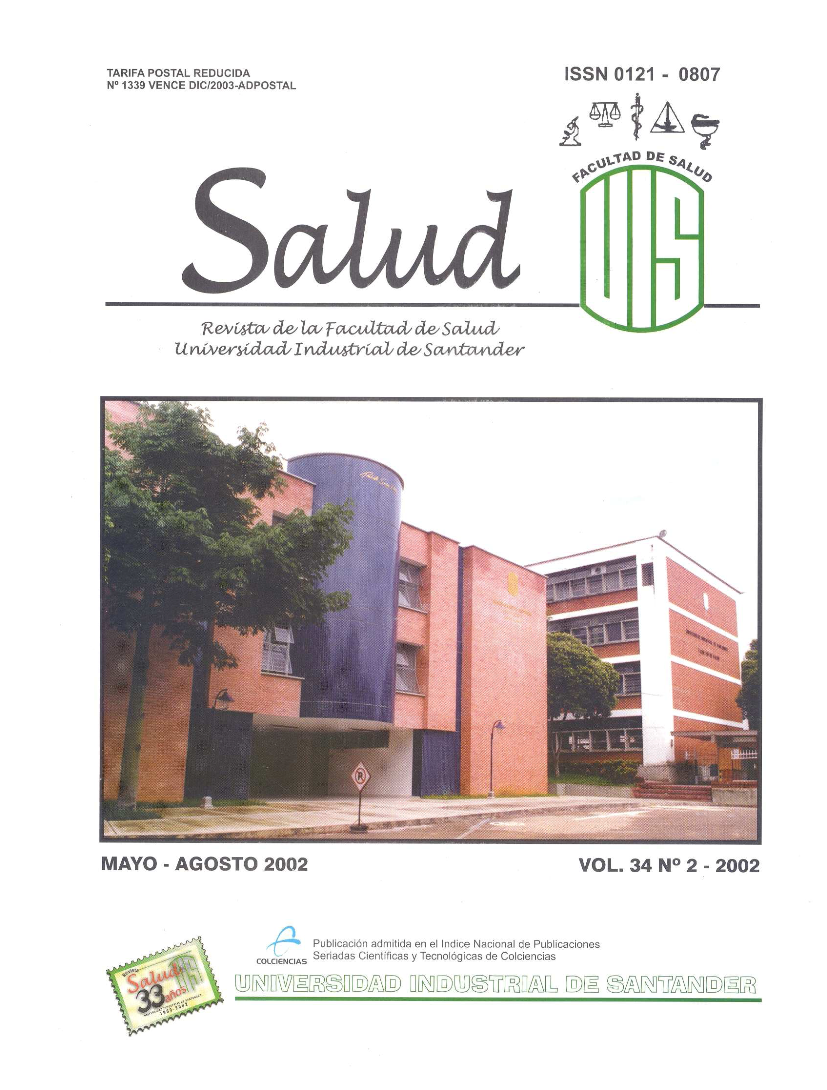Abstract
RESUMEN
La aspiración de un cuerpo extraño, es una de las principales emergencias por las cuales consulta un padre. El diagnóstico clínico en la fase aguda puede ser difícil pero ante su sospecha deben practicarse la broncoscopia y de confirmarse la presencia de un cuerpo extraño la extracción debe ser inmediata. Con el objetivo de evaluar la exactitud en el diagnóstico, las manifestaciones clínicas, radiológicas, broncoscópicas y las terapias instauradas, se revisaron 37 historias clínicas de niños a quienes se les extrajo un cuerpo extraño en vía aérea en el Hospital Universitario Ramón González Valencia de Bucaramanga, entre 01 de Junio de 1986 y 31 de Mayo de 1996. Fue excluido un paciente por no tener los datos completos en la historia clínica. La mayor frecuencia ocurrió entre los 2-5 años de edad (44.4%). Los hombres fueron los más afectados con una relación 1.5:1. La actividad realizada por el niño más frecuente fue la alimentación (52.7%). Los vegetales fueron el principal cuerpo extraño (52.7%), seguido por huesos (25%), plástico (13.8%). La disnea, tos, tirajes, cianosis y sibilancias fueron los principales síntomas. Más de la mitad consultaron después de las primeras 24 horas (1-21 días). El bronquio fuente derecho fue el más afectado. Tres pacientes presentaron complicaciones por su consulta tardía. Salud UIS 2002; 34: 79 - 88
Palabras clave: Aspiración, Cuerpo extraño, Vía aérea, Traqueobronquial.
ABSTRACT
The aspiration of a foreign body is one of the principal medical emergencies in childhood. Clinical diagnosis in the acute form of this problem could be a little difficult to estimate. A bronchospy must be employed if any doubt exists. If this procedure confirms the presence of a foreign body, the extraction must be done immediately. With the purpose to evaluate the accuracy in the diagnosis, chest radiographies, bronchoscopies or medical treatments, thirty seven (37) health histories of children with extraction of strange elements in airways were studied in the University Hospital Ramón Gonzales Valencia of Bucaramanga, between 01/ 06/86 and 31/05/96. A patient with an incomplete health history was excluded. Children between 2-5 years represented the higher frequency (44.4%). Male patients were most affected with a proportion 1.5:1. Feeding by the child was the most frequency cause (52.7%). Vegetables were the principal foreign body (52.7%), followed by bones (25%) and plastic (13.8%). Dyspnea, cough, cyanosis and wheezes were the main symptoms. Over 50% went to consultancy after 24 hours (1 -21 days). The right bronchus was the most affected. Three patients presented complications, because they consulted too late. Salud UIS 2002; 34: 79 - 88
Key words: Aspiration, Foreign body, Airway, Tracheobronchial.
Se autoriza la reproducción total o parcial de la obra para fines educativos, siempre y cuando se cite la fuente.
Esta obra está bajo una Licencia Creative Commons Atribución 4.0 Pública Internacional.
